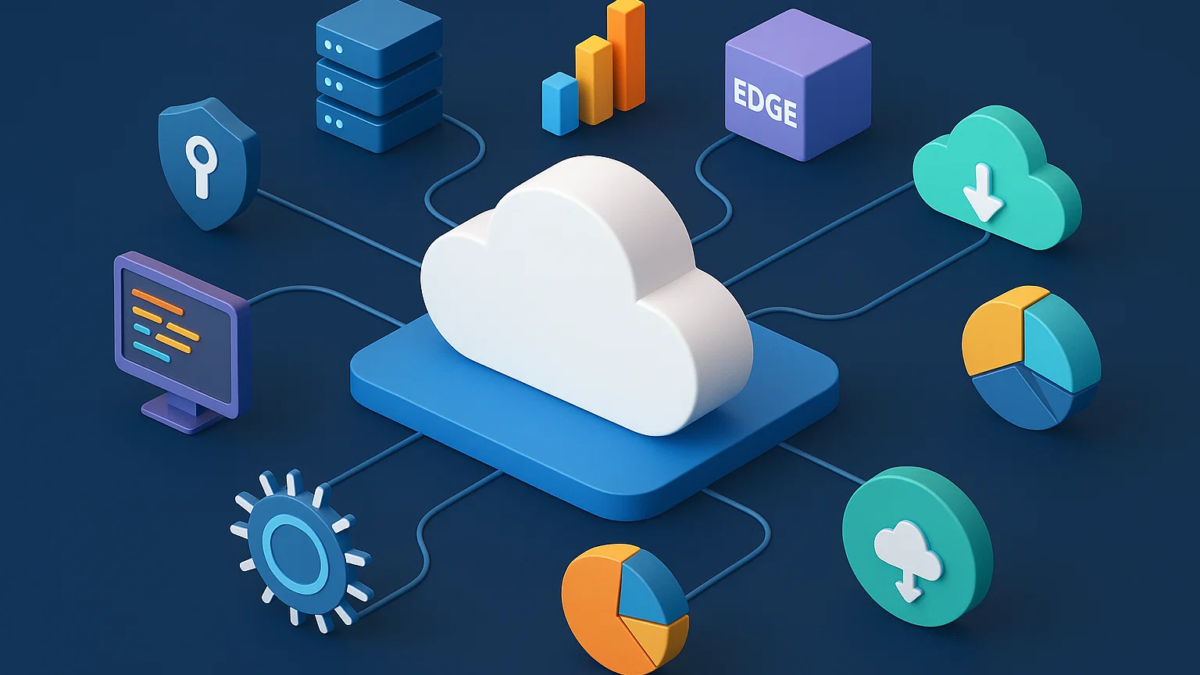Top 7 Cloud Computing Trends That Will Shape Enterprise IT in 2025
Table of Contents
Introduction: Cloud Computing at the Forefront of IT
Cloud computing has become the backbone of modern enterprise IT. As organizations continue to adopt digital-first strategies, cloud platforms are not just supporting operations they are driving innovation, agility, and scalability.
In 2025, enterprises must stay ahead of emerging cloud computing trends to maintain competitive advantage, improve efficiency, and secure critical data. Let’s explore the top seven trends shaping enterprise IT this year.
Hybrid and Multi-Cloud Strategies
Many enterprises are moving away from single-vendor cloud solutions toward hybrid and multi-cloud architectures.
Why it matters:
- Reduces vendor lock-in and increases flexibility.
- Optimizes performance by choosing the best platform for each workload.
- Enhances disaster recovery and business continuity.
Example: Companies like Netflix and Spotify leverage multi-cloud setups to ensure seamless streaming and global service reliability.
AI and Machine Learning Integration
AI is no longer optional in cloud computing—it’s embedded in modern IT workflows.
Key applications:
- Predictive analytics for operations and customer insights.
- Automated infrastructure management using AI-driven orchestration.
- Enhanced cybersecurity through anomaly detection and threat intelligence.
Impact: Enterprises can reduce downtime, optimize resources, and improve decision-making with AI-powered cloud solutions.
Serverless Architecture
Serverless computing allows organizations to run applications without managing servers, reducing complexity and cost.
Benefits:
- Scales automatically based on demand.
- Reduces infrastructure maintenance overhead.
- Accelerates deployment of microservices and cloud-native applications.
Real-world adoption: Amazon Web Services’ Lambda and Microsoft Azure Functions are leading serverless solutions driving enterprise innovation.
Cloud-Native Security
As cloud adoption grows, security remains a top priority. 2025 trends focus on cloud-native security solutions that protect data in distributed environments.
Key practices:
- Zero-trust architectures to minimize insider and external threats.
- Encryption of data in transit and at rest.
- Continuous security monitoring and AI-driven threat detection.
Insight: Gartner predicts that by 2025, over 70% of enterprises will adopt cloud-native security tools to safeguard digital assets.
Edge Computing and Cloud Collaboration
Edge computing is changing how enterprises process data by bringing computing closer to the source.
Benefits for IT:
- Reduces latency for real-time applications like IoT, AR/VR, and analytics.
- Supports hybrid cloud models by connecting edge and central cloud systems.
- Enhances efficiency for high-volume, low-latency workloads.
Use case: Autonomous vehicles and smart factories rely on edge-cloud integration for real-time decision-making.
Green Cloud Computing
Sustainability is becoming a major factor in enterprise IT decisions. Cloud providers are investing in energy-efficient infrastructure and carbon-neutral data centers.
Why it matters:
- Reduces operational costs and environmental impact.
- Aligns with corporate ESG (Environmental, Social, Governance) goals.
- Meets regulatory compliance for green initiatives.
Example: Google Cloud and AWS are leading with renewable energy-powered data centers, helping enterprises achieve net-zero IT operations.
Cloud Analytics and Business Intelligence
Cloud-based analytics platforms are enabling real-time insights and predictive intelligence for enterprises.
Trends:
- Integration of big data analytics and AI for smarter decision-making.
- Centralized dashboards for cross-functional visibility.
- Self-service analytics empowering business users without IT intervention.
Impact: Organizations can quickly respond to market changes and make data-driven strategic decisions.
Conclusion: The Future of Enterprise IT
In 2025, cloud computing is no longer just a technology choice it’s a strategic imperative. From hybrid cloud adoption to AI integration, serverless architecture, and sustainable operations, enterprises that embrace these trends will gain agility, scalability, and competitive advantage.
Staying ahead of these trends allows organizations to drive innovation, enhance security, and optimize costs while preparing for the next wave of digital transformation.
Maximize your content reach and generate qualified leads partner with iTMunch forB2B Content Syndication today!





